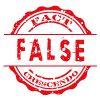
The inclusion and approval of various chemicals in products have raised concerns among consumers regarding their safety. Social media users are now alarmed about the use of Oxybenzone in sunscreens as they claimed it to be carcinogenic.
A recent post claimed that Cancer Council Australia uses the same chemical Oxybenzone in their sunscreen which is carcinogenic and hormone disruptor and requested consumers to avoid such products.
However, Fact Crescendo found the claim to be false. Cancer Council Australia do not use Oxybenzone in its sunscreen.
What’s the claim?
A social media user wrote that when sunlight increases our body’s production of Vitamin D which fights cancer, Australia’s own Cancer Council Australia sunscreens have been found to produce cancer. Chemical sunscreens often contain the ingredients ‘oxybenzone’ or ‘octinoxate’ which are hormone disruptors
Fact Check-
Does Cancer Council Australia use Oxybenzone and Octinoxate?
We found that Cancer Council Australia’s sunscreen contains active ingredients including Homosalate (8% w/w), Octocrylene (6% w/w), Octyl Salicylate (5% w/w), Butyl Methoxydibenzoylmethane (3% w/w), and 4-Methylbenzylidene Camphor (2.5% w/w), which work together to provide UV protection. It also includes preservatives such as Phenoxyethanol and Hydroxybenzoates to maintain product stability and prevent microbial growth.
Cancer Council Australia do not contain Oxybenzone and Octinoxate which was claimed to be carcinogenic and hormone disruptor.
Let’s see the facts about Oxybenzone and Octinoxate.
In 2019 FDA proposed rule on sunscreen products (published in the Federal Register) reviewed the safety and effectiveness of active ingredients in OTC sunscreens, including oxybenzone. The FDA requested more data on oxybenzone to assess whether it qualifies as “generally recognized as safe and effective” (GRASE) under current conditions. This is due to increased sunscreen use and evolving knowledge about potential health and environmental risks.
The rule did not declare oxybenzone unsafe but highlighted the need for additional studies, including its absorption into the body, potential endocrine-disrupting effects, and long-term safety. Until further data is available, oxybenzone remains approved for use in sunscreens, and these products can continue to be sold as part of safe sun protection practices.
Cosmetic Info released myths and facts about Oxybenzone in their website. One of the major concerns is that Oxybenzone is a hormone disruptor. But cosmetic Info clarified that some groups claimed that the chemical can disrupt hormones by mimicking estrogen. But there is no reliable scientific evidence to support these claims. Studies show that it would take an unrealistically long time up to 277 years to reach the exposure levels if a person uses sunscreen every day. Another study on humans in 2004 found no significant changes in reproductive hormones after oxybenzone use.
In June 2021, the EU’s Scientific Committee on Consumer Safety (SCCS) reviewed new data on Oxybenzone also known as benzophenone-3 (BP-3) and confirmed it is safe at specific concentrations. BP-3 is safe up to 6% in face creams, hand creams, and lipsticks, and up to 2.2% in sunscreen body creams, sprays, and pump sprays. If BP-3 is also used to protect the product itself from UV damage, the amount for UV filtering should stay below 1.7%. Overall, BP-3 is safe up to 0.5% when used to prevent UV-related product deterioration.
Cancer Council Australia also clarified that there’s no evidence that chemicals in Australian sunscreens disrupt the endocrine system, which regulates critical body functions like sleep, metabolism, and reproduction. While some worry about ingredients like oxybenzone and octinoxate, these claims are based on studies involving swallowing the chemicals, not applying them to the skin, where absorption is much lower. Australian sunscreens are regulated by the Therapeutic Goods Administration (TGA), which ensures they are safe and effective by monitoring scientific evidence and approving only safe ingredients.
The National Toxicology Program (NTP) found that very high concentrations of certain UV filters like Oxybenzone may cause slight endocrine disruption in animals, and some evidence of cancer was seen in one type of rodent. However, these results don’t suggest that UV filters in sunscreen will harm humans when used as directed. NTP also clarified that not using sunscreen and being exposed to the sun can harm your skin and raise the risk of skin cancer.
Conclusion:
Fact Crescendo found the claim to be false. Cancer Council of Australia do not use Oxybenzone and Octinoxate in its sunscreen products. Both the chemicals are approved and considered safe when used under the prescribed value. Studies have also not found any adverse health effects in humans upon using sunscreens having Oxybenzone and Octinoxate.

Title:Does Cancer Council Australia use Oxybenzone in its sunscreens which is carcinogenic and affects hormones?
Written By: Siddharth SahuResult: False


